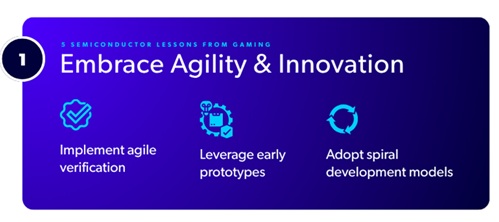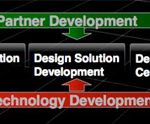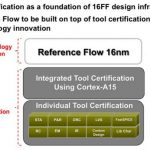You are currently viewing SemiWiki as a guest which gives you limited access to the site. To view blog comments and experience other SemiWiki features you must be a registered member. Registration is fast, simple, and absolutely free so please,
join our community today!
Founders
Cyril Spasevski is the President, CTO and founding engineer at Magillem, bringing a team of engineers, all experts with an SoC platform builder tool. In 2006 Cyril and his team met a seasoned business woman, and decided to form Magillem. Design teams were struggling with different tools at different stages of the flow,… Read More
The existence of TSMC’s Open Innovation Platform (OIP) program further sped up disaggregation of the semiconductor supply chain. Partly, this was enabled by the existence of a healthy EDA industry and an increasingly healthy IP industry. As chip designs had grown more complex and entered the system-on-chip (SoC) era, the amount… Read More
In the first post of this series, we named the popular methods for texture compression in OpenGL ES, particularly Imagination Technologies PVRTC on all Apple and many Android mobile devices. Now, let’s explore what texture compression involves, what PVRTC does, and how it differs from other approaches.… Read More
There was some serious backlash to the “Intel Bay Trail Fail” blog I posted last week, mostly personal attacks by the spoon fed Intel faithful, but there are however some very interesting points made amongst the 30+ comments so be sure and read them when you have a chance.
The Business insider article “The iPhone… Read More
Increasingly, a GPU is misnamed as a “graphics” processing unit. They are really specialized architecture highly parallel compute engines. You can use these compute engines for graphics, of course, but people are inventive and find ways of using GPUs for other tasks that can take advantage of the highly parallel… Read More
I am talking about the health of electronic and semiconductor design, which if made sound at RTL stage, can set it right for the rest of the design cycle for faster closure and also at lesser cost. Last week was the week of ITC(International Test Conference) for the Semiconductor and EDA community. I was looking forward to what ITC… Read More
Once a year Mentor has a customer appreciation event in Silicon Valley with a guest speaker on some aspect of science. This is silicon valley, after all, so we all have to be geeks. This year it was Dr Sean Carroll from CalTech on The Particle at the End of the Universe, the Hunt for The Higg’s Boson and What’s Next.
Wally … Read More
I am not making this up: All exports from the United States of EDA software and services are controlled under the Export Administration Regulations, administered by the U.S. Department of Commerce’s Bureau of Industry and Security (BIS). You need to understand these regulations. Failure to comply can result in severe … Read More
It is beginning to look as if 28nm transistors, which are the cheapest per million gates compared to any earlier process such as 45nm, may also be the cheapest per million gates compared to any later process such as 20nm.
What we know so far: FinFET seems to be difficult technology because of the 3D structure and so the novel manufacturing… Read More
Today TSMC announced three reference flows that they have been working on along with various EDA vendors (and ARM and perhaps other IP suppliers). The three new flows are:
- 16FinFET Digital Reference Flow. Obviously this has full support for non-planar FinFET transistors including extraction, quantized pitch placement, low-vdd
…
Read More

















AI RTL Generation versus AI RTL Verification